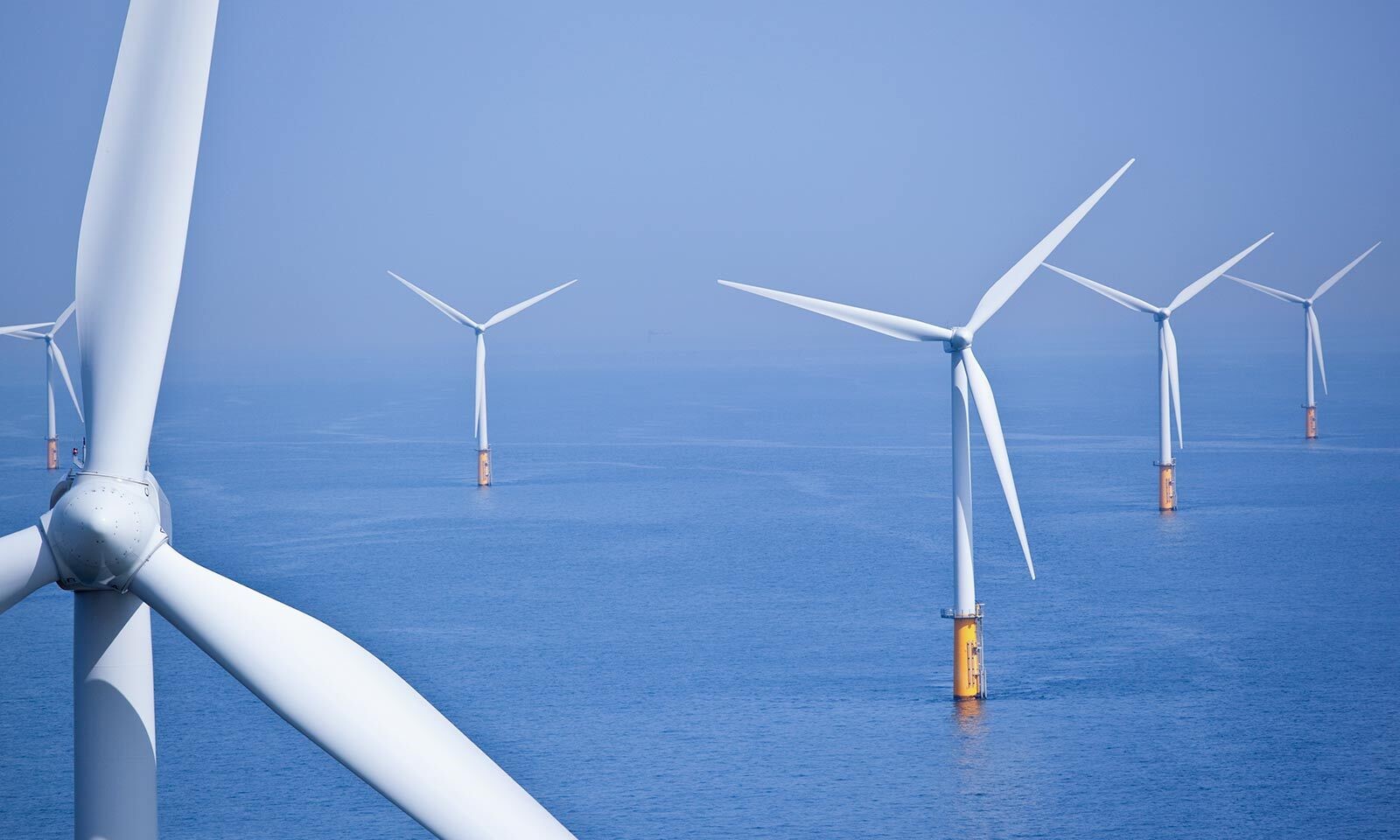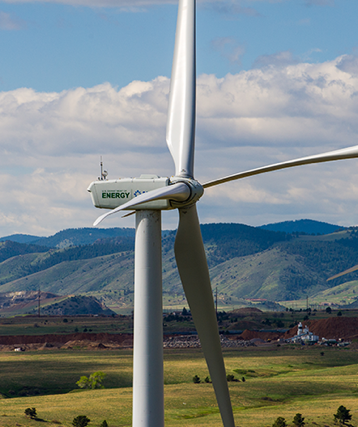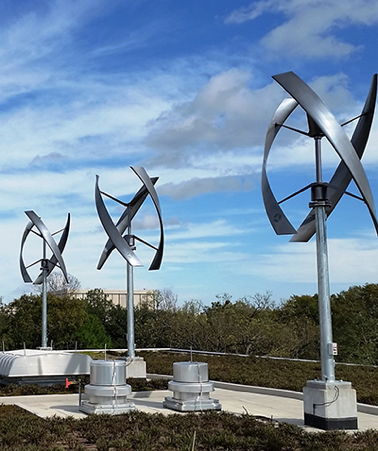Description

Disclaimer: Copyright infringement not intended.
Context
- India, targeting wind capacity addition of 100 GW by 2030, has an opportunity to emerge as a major player in supply chain if facilitative policy measures are put in place, the Global Wind Energy Council (GWEC) said in its latest report.
|
GWEC
- The Global Wind Energy Council (GWEC) was established in 2005 to provide a credible and representative forum for the entire wind energy sector at an international level.
- GWEC’s mission is to ensure that wind power is established as one of the world’s leading energy sources, providing substantial environmental and economic benefits.
|
Highlights of the report
- Being the second largest Asia-Pacific hub for turbine assembly and key components production, India was in a unique position to leverage growing export and international service opportunities as the industry is set to install about 136 GW per year.
- With an existing share of 11 per cent in blade manufacturing, 7 per cent in wind turbine generator and 12 per cent in gearbox manufacturing, India stands at a unique position to further strengthen its position in the global wind supply chain.
- However, any restrictive trade policies in India or in other regions that mandate complete localization may lead to price surges and supply chain disruptions.
- To be able to meet national, regional and global climate action goals, building on regional competitive advantages shall foster a healthy growth in the wind energy sector as compared to restrictive policies.
|
India has set an annual target of 8GW onshore wind tender for years 2023-2030 combined with the desired addition of 37 GW of offshore wind by 2030.
|
What is Wind Energy?
- This takes advantage of wind motion to generate electricity.
- Wind motion is brought about by the heat from the sun, and rotation of the earth, mainly via the Coriolis Effect.
- Wind is a form of solar energy caused by a combination of three concurrent events:
- The sun unevenly heating the atmosphere
- Irregularities of the earth's surface
- The rotation of the earth.
.jpeg)
Working of Wind Turbine
- Wind turbines work on a simple principle: instead of using electricity to make wind—like a fan—wind turbines use wind to make electricity.
- Wind turns the propeller-like blades of a turbine around a rotor, which spins a generator, which creates electricity.
Types of Wind Turbines
The majority of wind turbines fall into two basic types:
Horizontal-Axis Turbines :

- Horizontal-axis wind turbines are what many people picture when thinking of wind turbines.
- Most commonly, they have three blades and operate "upwind," with the turbine pivoting at the top of the tower so the blades face into the wind.
Vertical-Axis Turbines:

- These turbines are omnidirectional, meaning they don’t need to be adjusted to point into the wind to operate.
- Wind turbines can be built on land or offshore in large bodies of water like oceans and lakes.
Wind Energy in India
Current status
- India now has the fourth-highest installed capacity in the world, at 39.25 GW.
- However, this only represents 28% of the goal, which is to install 140 GW by 2030.
- With 9,867 MW, Tamil Nadu is responsible for 25% of its installed capacity. Gujarat is next, with an installed capacity of 9,419 MW.
- Since 2017, the rate of wind sector installations in India has slowed.
- 2021 saw the installation of just 1.45 GW of wind projects, much of which was delayed by the second wave of COVID-19 and problems with the supply chain.
- With a potential output of 1500 MW, the Muppandal Wind Farm near Kanyakumari is the largest onshore farm in the world.
- India has pledged to develop 60 gigawatts of wind power by 2022 as a component of its shift away from fossil fuels and to get half of its electricity from non-fossil fuel sources by 2030.
Initiatives
- National Offshore Wind Energy Policy 2015: The objective is to develop the offshore wind energy in the Indian Exclusive Economic Zone (EEZ) along the Indian coastline.
- National Wind-Solar Hybrid Policy 2018: The main objective of the Policy is to provide a framework for promotion of large grid connected wind - solar PV hybrid system for optimal and efficient utilization of transmission infrastructure and land, reducing the variability in renewable power generation and achieving better grid stability.
- To make up for loss during covid, the Ministry of New and Renewable Energy (MNRE) extended the timescale generally for projects with power purchase agreements (PPAs) signed before June 2021 for seven and a half months after the scheduled commissioning date (SCD), bringing the SCD of 0.7 GW projects forward to 2022.

Benefits
- A Fuel Supply That Never Runs Out: Renewable energy is created from sources that naturally replenish themselves.
- Zero Carbon Emissions: there are no greenhouse gasses or other pollutants created during the process.
- Cleaner environment: renewable energy creates no pollution, waste, or contamination risks to air and water.
- A Cheaper Form of energy: With the rapid growth of renewable energy over the last ten years, solar and wind power are now the cheapest sources of energy in many parts of the world.
- Renewable Energy Creates New Jobs: With an increasing focus on global warming and many governments setting ambitious carbon-reduction goals Renewable Energy has quickly become a major source of new job growth.
Challenges
- Some of the wind turbines are nearly 25 years old, making them some of the oldest in existence. These are ancient models, each having a capacity of only 250 kilowatts.
- Offshore wind is currently believed to be unfeasible due to high prices and ongoing research & development on turbines.
‘Evaluation of Wind Energy in India’ : A 2022 Report by Parliamentary Standing Committee
Key observations and recommendations of the Committee are:
Potential of wind energy
- The Committee observed that only a fraction of the country’s wind potential has been tapped.
- The commercially exploitable potential of wind energy in India is estimated to be more than 200 gigawatt (GW).
- Reasons for slow capacity addition include:
- shift in tariff system from feed-in-tariff (guaranteed above-market price for producers) to tariff determination by competitive bidding, and
- aggressive bidding by developers.
- The Committee observed that solar energy has been prioritised over wind energy, despite import dependence in the solar sector.
- From March 2014 to May 2022, the installed capacity of wind power has increased by 93% as compared to a 2064% increase in solar power. It noted that India has strong domestic manufacturing in the wind energy sector.

Repowering old turbines
- The Committee noted that most of the wind energy potential of India is available in eight states which include Andhra Pradesh, Gujarat, Karnataka, and Madhya Pradesh.
- A majority of states with wind energy potential have been exploited.
- The Committee recommended:
- replacing old and less efficient turbines with advanced turbines, and
- formulating a policy for repowering of old turbines and issuing guidelines for recycling old turbines.
Change in tariff system
- Till 2017, wind energy capacity addition was through a feed-in tariff mechanism (guaranteed above-market price for producers) and subsequently, it changed to tariff determination through competitive bidding. This shift has disrupted installation of projects.
- There has been a transition from a relatively high tariff of Rs 4-5/unit to a more competitive tariff of Rs 2.5-3/unit.
- This has reduced the profitability of wind power projects.
- The Committee observed that under the bidding mechanism, the size of wind power projects has increased and they are awarded to large independent power producers/developers.
- Some developers resort to aggressive bidding, thus decreasing prices to unsustainable levels and eventually back out of the project.
- The Committee recommended provisions for a heavy penalty on developers backing out unilaterally and blacklisting persistent defaulters.
Solar-wind hybrid projects
- It recommended promoting setting up of wind-solar hybrid projects to harness the installable potential of more than 50 GW.
Non-payment by distribution companies
- As of November 2021, the Indian Renewable Energy Development Agency had disbursed loans worth Rs 18,620 crore for 746 wind power projects, with non-performing assets (NPAs) of about Rs 600 crore.
- The Committee observed that one of the reasons for the NPAs is the non-payment of dues by distribution companies (discoms).

Renewable Purchase Obligation (RPO)
- The Committee observed that only four states- Himachal Pradesh, Karnataka, Andhra Pradesh, and Tamil Nadu have fulfilled the RPO target of 19% as per the National RPO trajectory for 2020-21.
- It recommended the ensuring RPO compliance by all states and enforcing penalties against defaulting entities.
Offshore wind power
- The Committee noted that offshore wind energy (wind energy projects in water bodies) potential was estimated to be about 70 GW off the coast of Gujarat and Tamil Nadu.
- However, no project has been established in these states.
- Offshore wind energy has higher capacity utilisation factor than onshore projects and its cost decreases with increase in installed capacity.
- The Committee recommended exploring offshore wind potential in different coastal areas of India.
|
PRACTICE QUESTION
Q) Implementing the suggestions put forward by the Parliamentary Standing Committee in 2022 can be a game changer for the wind energy sector in India. Discuss. (250 words)
|

https://www.deccanherald.com/national/india-needs-to-back-its-wind-energy-ambitions-with-investment-global-wind-energy-council-1204693.html

















